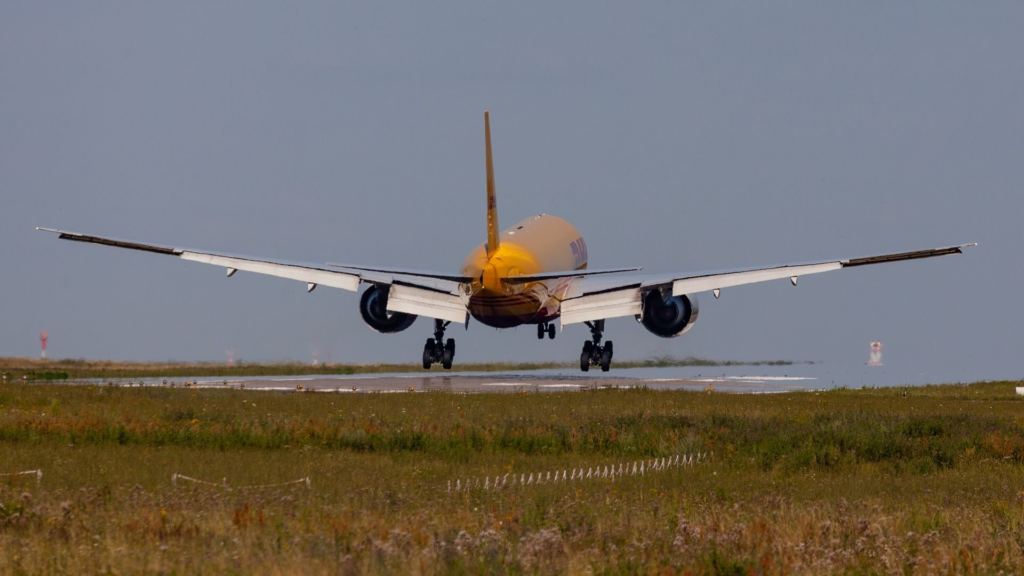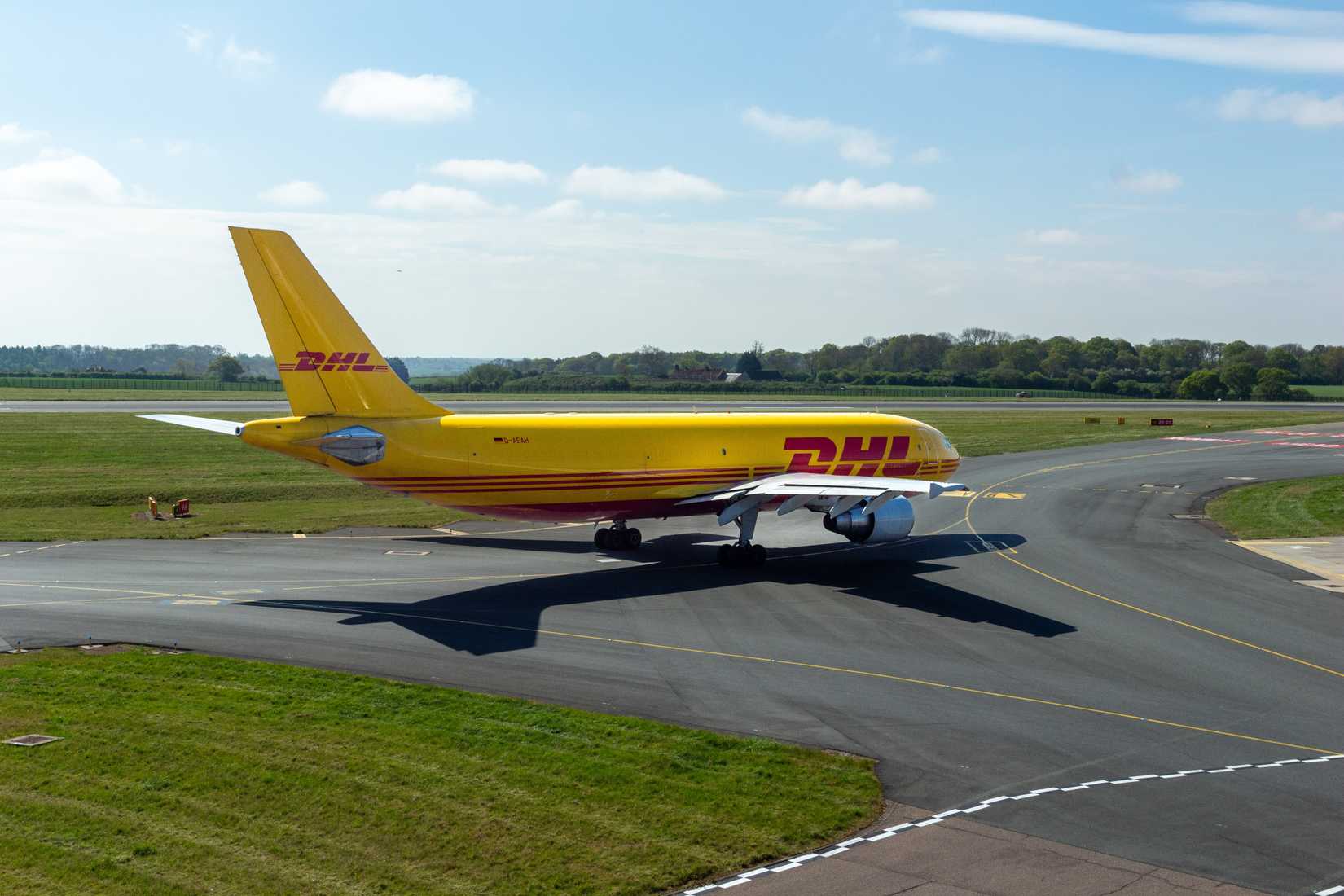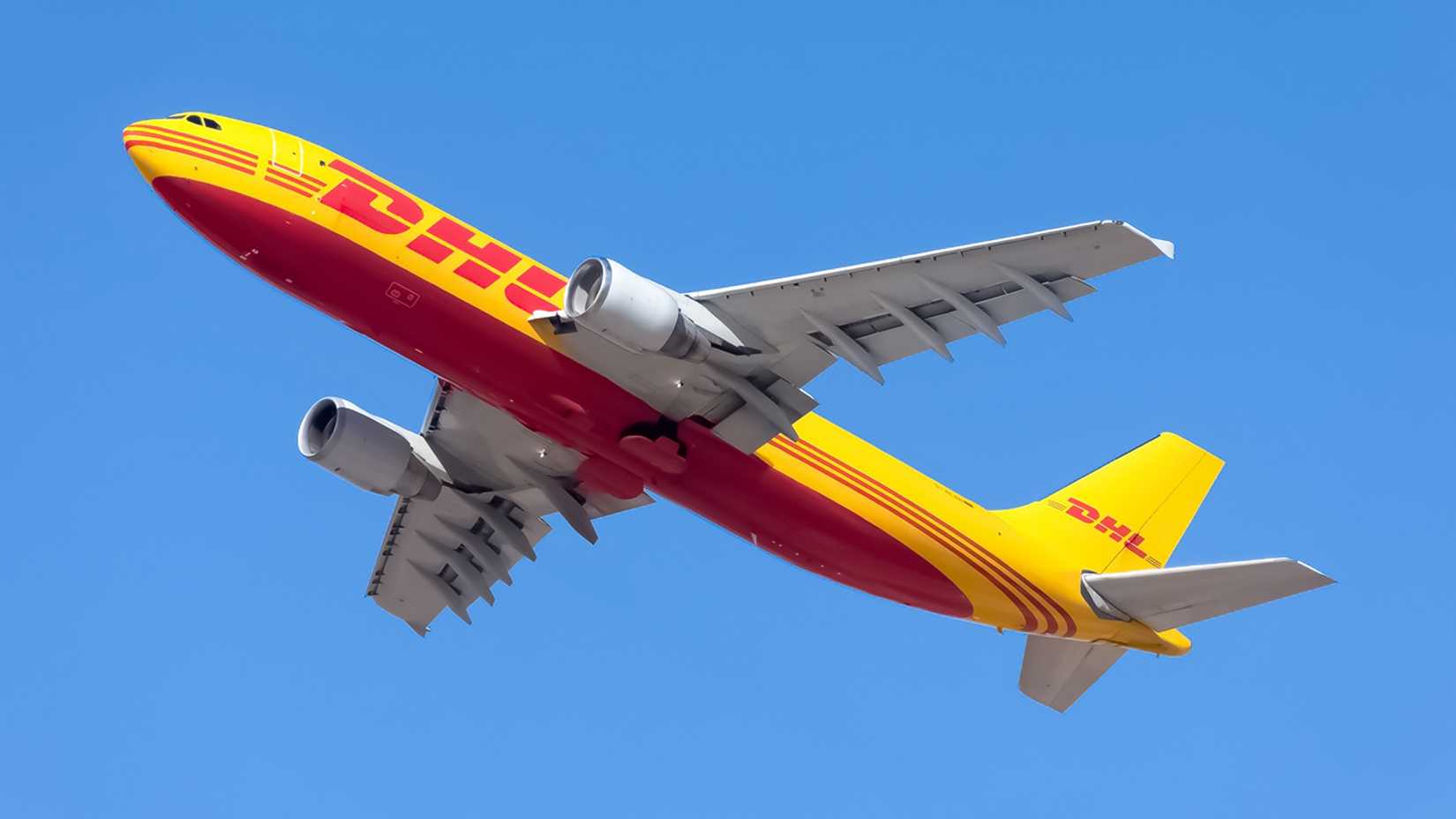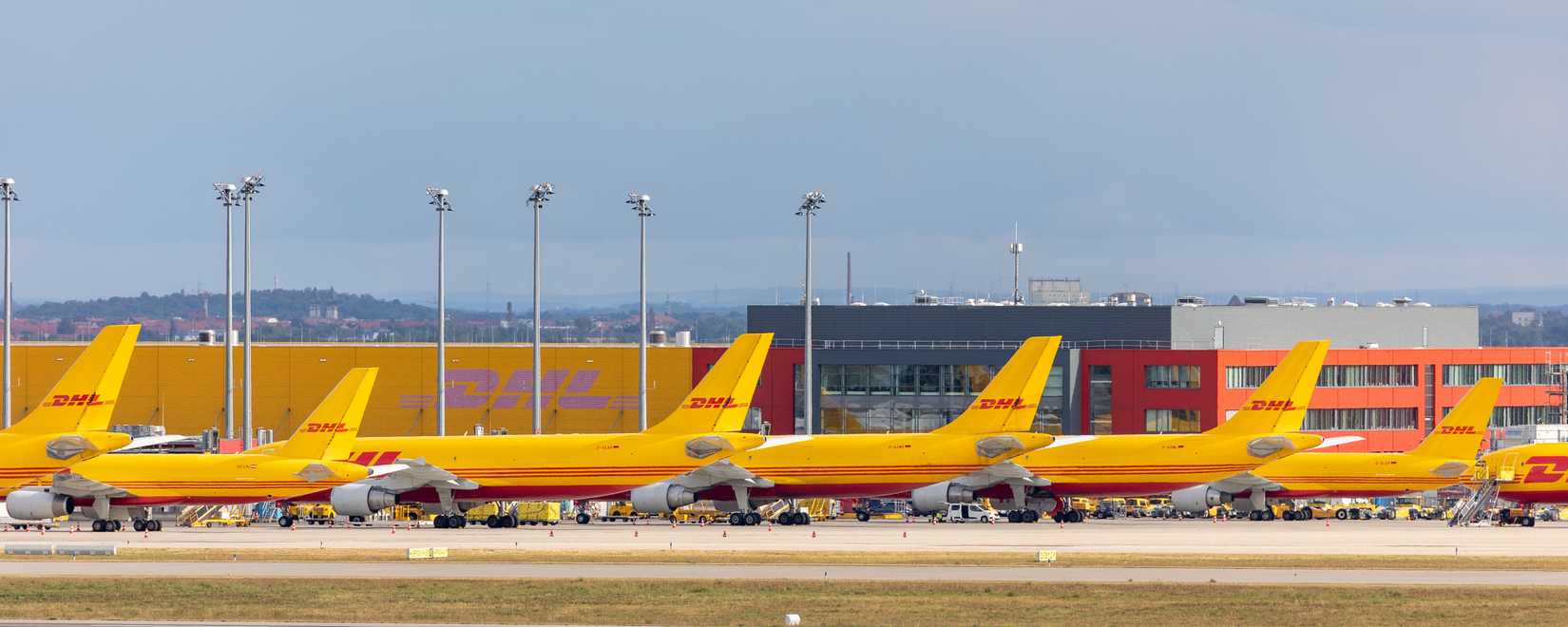This past Sunday was an unlucky date for the United Kingdom’s busiest hub:  London Heathrow Airport (LHR). The events that caused so many travel headaches at Heathrow were quite dramatic, owing to a 170 mph tail strike involving an arriving widebody twinjet operating a cargo flight.
London Heathrow Airport (LHR). The events that caused so many travel headaches at Heathrow were quite dramatic, owing to a 170 mph tail strike involving an arriving widebody twinjet operating a cargo flight.
The DHL freighter jet that unfortunately scraped the tarmac during its go-around was arriving from Leipzig, Germany, as cameras caught the incident on tape. The landing approach was unstable when the plane came in on the ill-fated first attempt, but the jet did make a safe touchdown on its next attempt.
A Rough Sunday For DHL
The DHL jet that struck its tail on Heathrow’s runway 09L was an Airbus A300-600, registered as D-AEAG, and was operating the flight QY2212, according to The Aviation Herald. The video stream by Big Jet TV was live when the plane made its bumpy approach to LHR. The clip captures a rough touchdown with what appears to be an overcorrection by the pilot to save the nose from slamming the deck. Those actions resulted in the tail strike.
Commentary online claims that the video shows the thrust reversers were engaged on the A300’s engines during the landing. The powerful force of the forward thrust vector likely also contributed to the tail strike, if they were in fact deployed. Thrust reversers have the potential power to lift the nose wheel even under relatively benign conditions. The Independent reported that the runway was closed for 10 minutes after the incident for inspection.
Although only a brief delay, the incident forced numerous aircraft to go-around, orbit the field, or delay their departure. The Independent estimated that at least 20 flights, including transatlantic departures, were delayed by an hour or more, and relayed the following statement from DHL:
“We will be investigating the circumstances around this incident in cooperation with the respective aviation authorities. Until that investigation is completed, we are unable to provide any further information.”
Hard Day For A Weary Workhorse
The 34-year-old freighter began life as a passenger plane with Japan Air System in 1992, according to Planespotters.net. It has been flying cargo for European Air Transport Leipzig since 2011, but only under DHL since 2022. EAT Leipzig operates 35 aircraft in its fleet, including Boeing and Airbus jets. The carrier also runs its own maintenance and flight training programs.
The A300-600F is the longest variant of the family and one of Airbus’ longest widebody jets available. It is 54.08 meters (177 feet 5 inches) long in total, according to Air Charter Service. Originally launched in the mid-1980s, it was advanced for the time with its glass cockpit and digitalized avionics as developed for the A310.
JAS has since merged with Japan Airlines, but it was one of the last customers to receive the final customers to take delivery of A300-600R variants that D-AEAG is based on. The model features an extra fuel tank in the tail to increase range. The famous Beluga oversize cargo transport flown by Airbus for its production lines is also based on the A300-600 series of widebodies.
Recurring Trouble For EAT Leipzig
Last year, EAT Leipzig suffered two tailstrikes within days of each other when another A300-600, D-AZMO, had a rough go-around on Leipzig’s runway 26L on February 11, 2024. Previously, on February 7, the other A300-600 freighter, registration D-AEAN, struck its tail during landing from Warsaw, Poland. The Aviation Herald reported that D-AZMO landed successfully on its second attempt, and D-AEAN rolled to a safe stop during its landing.
D-AZMO’s mishap caused structural damage to both the jet and the Leipzig Airport (LEJ) runway. The cause was attributed to pilot error during the aborted landing. Meanwhile, the D-AEAN fallout was reported to be more minor in terms of aircraft damage, and no runway damage was stated. This incident was chalked up to strong crosswinds.





